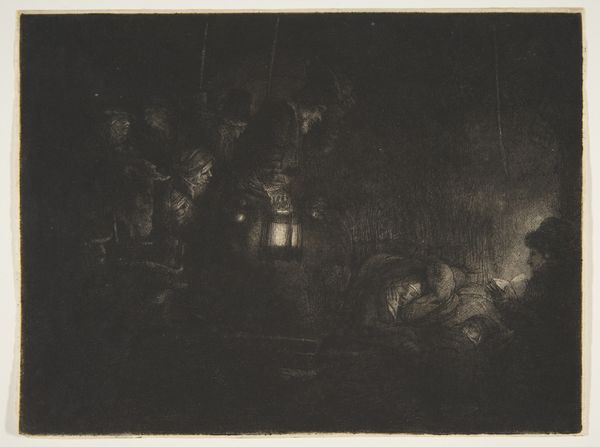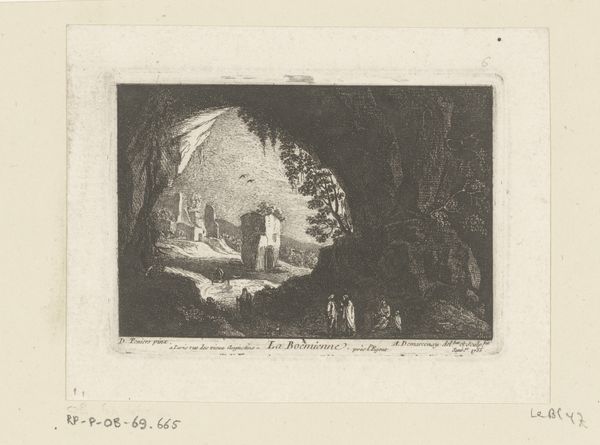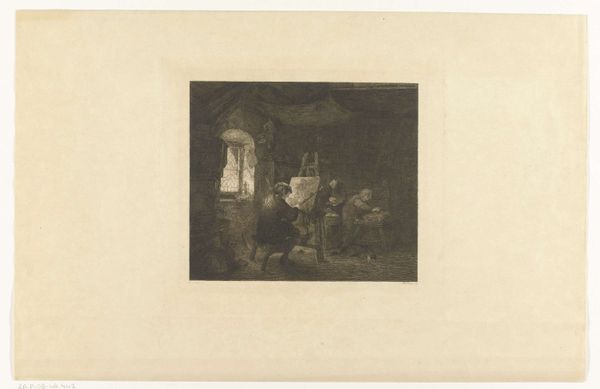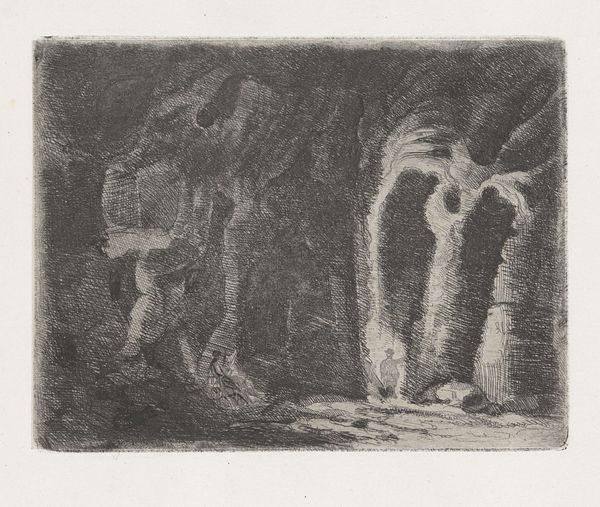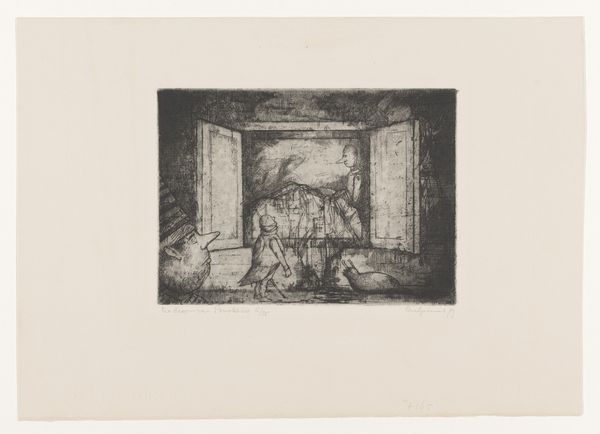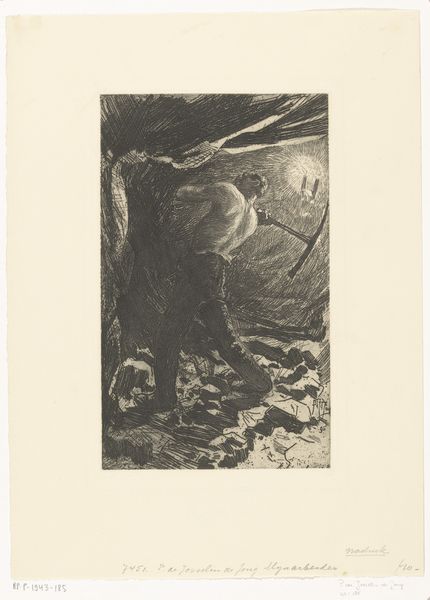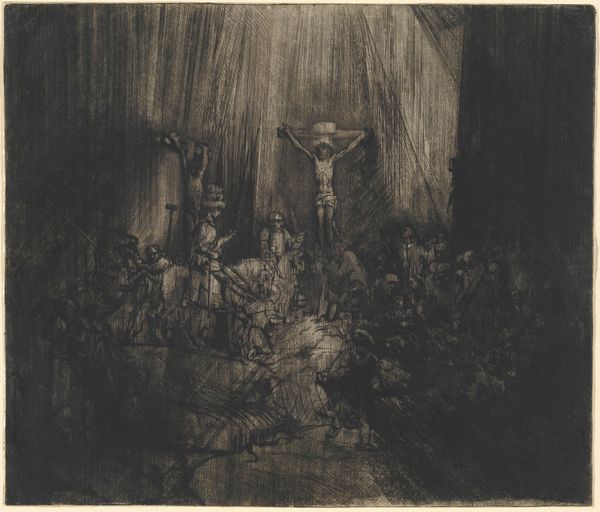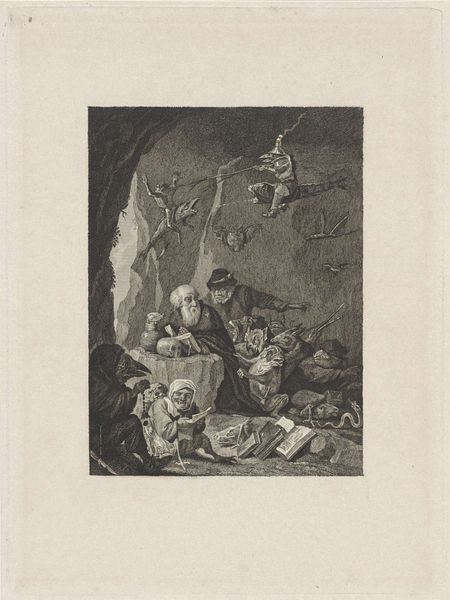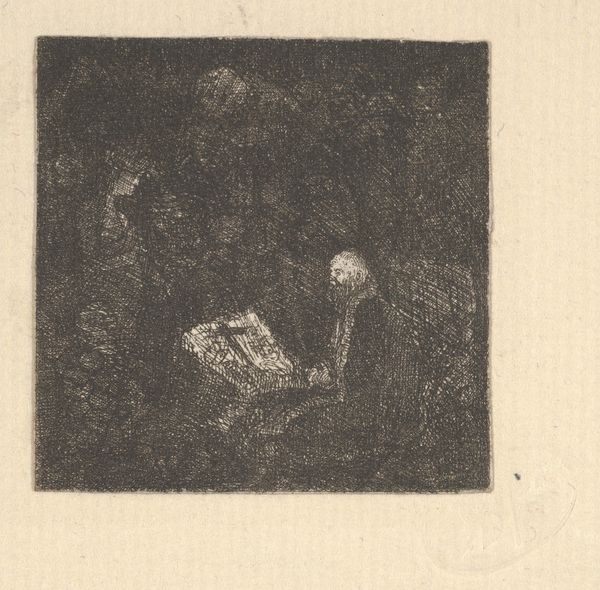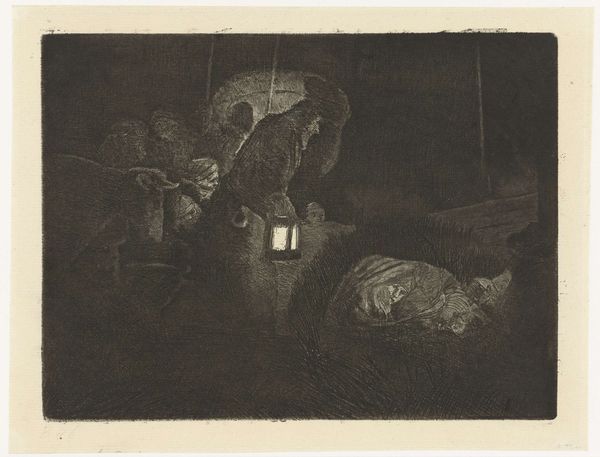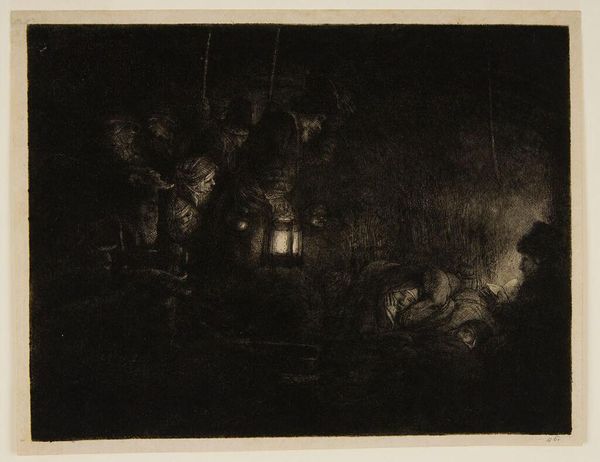
Dimensions: height 79 mm, width 103 mm
Copyright: Rijks Museum: Open Domain
Curator: This is an etching by Jean-Pierre Norblin de la Gourdaine, titled "Adoration of the Shepherds," created sometime between 1755 and 1830. The scene is immediately intimate, a dark space illuminated by the lantern, drawing the viewer in. Editor: It’s so tenebrous; I feel like I'm eavesdropping on something sacred, happening amongst the humblest members of society. There is a potent commentary on societal hierarchies happening here through contrasting shadow and light. Curator: The play of light is key; the lantern symbolizes spiritual illumination but also, practically speaking, allows us to read the gestures of adoration, the rough garments, and lined faces of the shepherds. Notice how their faces express not only piety, but also, a wonder that speaks to universal human values and emotional connection with the divine. Editor: Absolutely. The shepherd at the left is reaching forward, and it suggests his inclusion into a transformative experience. It reads as a profound depiction of human potential in connection to this event, cutting across socio-economic categories to create equal accessibility and empowerment for everyone. Curator: Yes, the symbolic and stylistic influence of Baroque art, with its drama and emotional intensity, is also visible here, creating tension in the dark space through an artificial aesthetic. The history of religious representation carries centuries of expectations for artists as they adapt recognizable scenes to the concerns of their time, reflecting shifts in cultural belief, politics, and power. Editor: Indeed. This wasn’t simply about picturing an ancient story; this piece reflects on faith, access, and equality amidst the social and political struggles. Considering it comes from the period it does, I’m struck by its timelessness, really, especially regarding the role that everyday working people are allowed to occupy in the context of sacred subjects. Curator: Considering the cultural associations of the story in contrast to the scene rendered here, it shows the ability of images to trigger collective memories and emotions over time. I am thinking about what is highlighted about humanity’s connection to history and spirituality here. Editor: This work, with its dark aesthetic and careful construction of the sacred amongst ordinary laborers, allows me to consider historical art practice not only through an art historical perspective, but with real urgency as a commentary on inclusion, and access. It invites contemporary discussions of power and cultural authority.
Comments
No comments
Be the first to comment and join the conversation on the ultimate creative platform.
